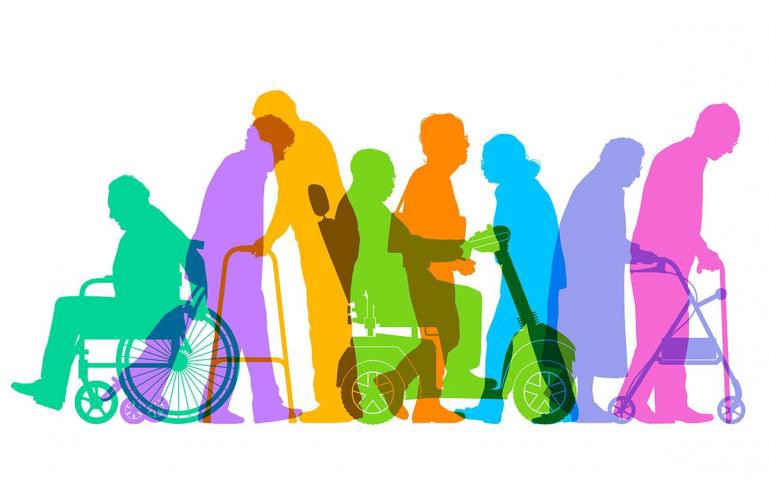Accessibility - The Ethical Responsibility
Dec 21 2020
AccessibilityIntroductionHi everyone, how are you? If you are able to read this article without having to use any assistive technologies, you should be thankful for that privilege. If you are using assistive technologies and are able to access this article without any issues, that’s your right and it should never be the other way.
You might or might not have heard about accessibility. Even if you would have heard about it, there might be chances you encountered some of the myths surrounding it which makes it burdensome or complex in general.
Today, we are going to start from the very basics of the topic, at 101 level, and gradually move towards more details. This article is specifically dedicated to introducing accessibility in general and how does it span to the web.
Accessibility also has a numeronym — a11y (where 11 stands for the number of letters between ‘a’ and ‘y’), and we will use both accessibility and a11y interchangeably in the rest of the article
Ok, get set go!!
Introduction
Accessibility is about making things and services accessible to all people (regardless of their ability or disability).
Let’s understand through some real-world scenarios:
Scenario 1: A wheelchair user needs to shop for groceries
But, staircases are the only way to enter the supermarket.
Image Credits: depositphotos
So, how will the customer shop for groceries? By not thinking about the different customer requirements, that supermarket made shopping a bad experience for some of the users. Also, What do you think are the odds of that customer visiting this shop again?
Negligible, right?
This is one of the very basic examples of how ignoring accessibility is bad for both — users as well as the business.
What could have been the right way: Providing ramps and elevators in addition to the staircases. This way users with different types of mobility requirements can shop without any hurdles.
Happy users == successful business
What this has to do with the web?
In the words of Tim Berners-Lee, W3C Director and inventor of the World Wide Web:
The power of the Web is in its universality. Access by everyone regardless of disability is an essential aspect.
The web was created to be accessible by default, to all users. Accessibility is an inherent aspect of the web.
Ok, so why are we talking about accessibility right now.
Because, we are making the web inaccessible through bad decisions, bad design, bad coding practices, and bad testing.
We create websites and applications so that they can be used by people. But, if users will not able to use these, why are we even creating these services and resources??
But really, do we need to consider accessibility?
I am glad you asked.
The short answer is yes.
There are many times where we see the business or decision-makers shrugging off the accessibility features as an afterthought.
Does any of the below arguments/excuses ring a bell:
- We do not have lots of users who might need it.
- Accessibility is expensive, we do not have the budget/resources for that.
- Well, it’s going to be time-consuming, we are running on a tight schedule.
- We can always add it later if we need it.
- It doesn't matter.
These show at best a lack of awareness and at worst lack of empathy and consideration for diverse users.
If you have ever come across such conversations, I suggest to go and read Max Antonucci’s article on comebacks for five wrong accessibility arguments.
To understand why we need web accessibility, we need to understand our users and their needs, their abilities, and the tools/techniques they use to access the web.
As per WHO (World Health Organization),
Around 15% of the global population — over a billion people — lives with some form of disability, of whom 2–4% experience significant difficulties in functioning.
There are different types of disabilities, including but not limited to:
- Visual
- Auditory
- Physical
- Cognitive
- Neurological
Disabilities can be divided into 4 categories. Let’s look at those using the example of users suffering from different kinds of vision impairment.
- Permanent — Some users could have permanent blindness, while others could have a varying range of low sightedness.
- Temporary — issues like an eye infection or eye surgery could temporarily impair the users visually.
- Situational — trying to read something in a bright environment,
- Progressive — eyesight could start decreasing as age increases. So a person who has sharp eyesight today, might not have the same sharpness tomorrow.
A11y is more than disabilities
It also helps users who might be facing:
- technical challenges — using the content on smaller devices, slower internet connection, older browsers, etc.
- Situational challenges — trying to listen to audio in a loud place, trying to watch videos in non-native languages or languages which we do not understand, etc.
How do these users use the web?
They use assistive technologies, like screen readers, screen magnification, speech recognition, refreshable braille display, large print tactical keyboards, and many more.
But the effectiveness of these tools depends on how the actual content has been created.
And hence these assistive technologies and devices could only be useful if the website or application has been designed and developed in a way that is understandable by them.
Accessibility benefits everyone
Some widely used a11y features which help everyone regardless of disability are:
- The subtitles for any video like movies, series, or any tutorial,
- Transcripts for audio, like — podcasts
- Dark mode toggle on the websites or applications.
How do we start?
Now that we know that web accessibility is important and we must all work towards creating accessible content, the next question would be how do we do that, how to start working with an accessibility perspective?
Few suggestions for that:
- Be aware: The first step towards fixing any issue is the acknowledgment of that issue. Unless we understand and acknowledge that web inaccessibility is a critical issue, we can’t go ahead and make it a priority. So, make yourself aware.
- Read about accessibility: Explore the various contents, documentation, tutorials, blogs, etc. present on the internet. I have added a few links for resources that can be used to get started.
- Start thinking and implementing from the user perspective.
Make informed decisions
as you go on designing, implementing, and testing the product
- Choosing color schemes, will it be accessible?
- Is the color contrast good enough for the content to be read by users with vision impairment?
- Is that pie-chart understandable by people with color blindness?
- What if the user cannot see? Will this image still make sense to them? Have I provided extra information (alternative description) that can be used by the user to understand what we are trying to convey using that image?
- Is this call to action element clickable by keyboard?
- Will users be able to navigate this modal popup?… and so on.
Who should be responsible for ensuring accessibility?
This is another burning question in the business model, where people often put off the responsibilities of making the product accessible to either developers or designers.
But that’s not the case. Let’s try to figure who all should be responsible for the accessibility of the product:
- Business owners
- Product owners
- Project managers
- Designers
- Team leads
- Developers
- Testers
- SEO specialists
- Marketing personals
- Content creators
In a nutshell,
Pretty much everyone on the team is responsible for ensuring the accessibility of the product.
Resources to refer:
- The official website of WCAG (Web Content Accessibility Guidelines)
- W3 accessibility documentation
- WebAIM checklist for web accessibility
- Google Developers group accessibility fundamentals
- The a11y project
Also, I have created a website Explore A11y that lists accessibility examples and resources for easy reference. You can check it out for details.
Conclusion
Accessibility is the responsibility of each one of us, together we can make the web a lot more accessible.
We need to focus on a11y just like everything else because it is the right thing to do.
If you liked this article, you can share it. Also, you can connect with me on twitter or linkedin if you would like to discuss or provide any feedback/suggestions.
Stay tuned, meet you in the next article! Take care!

